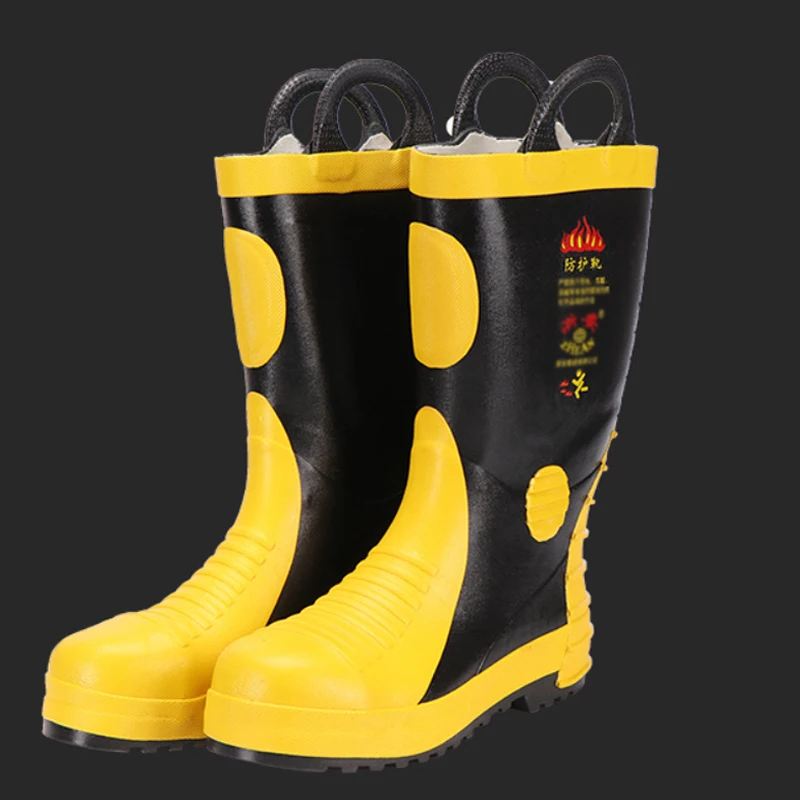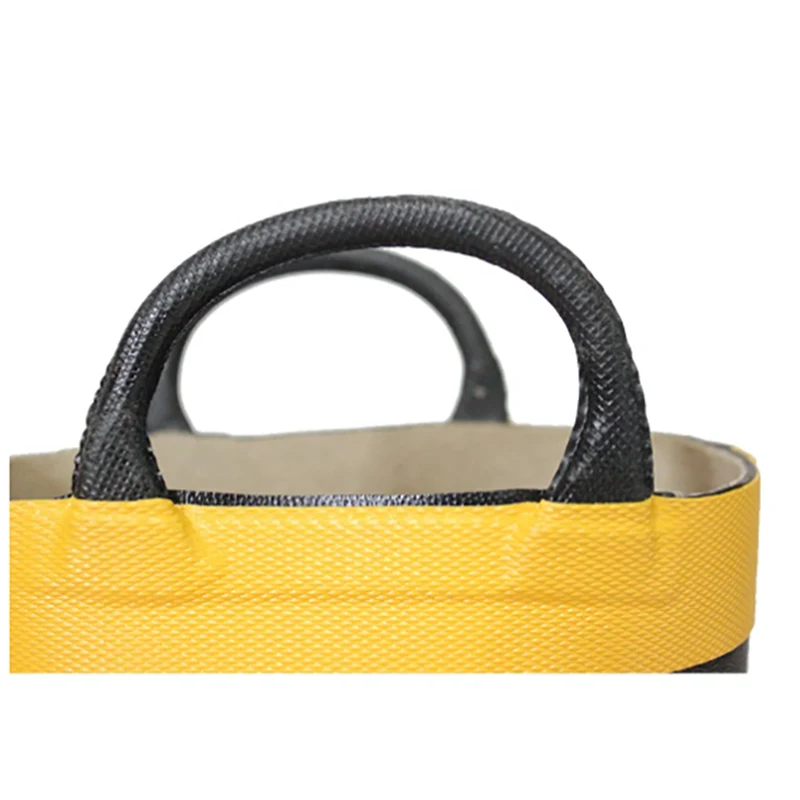Introduction
Firefighting boots are crucial for the safety and effectiveness of firefighters. They provide protection from heat, chemicals, and sharp objects while ensuring comfort and support during demanding situations. This comprehensive guide will delve into the key features, types, and benefits of firefighting boots, helping both current and aspiring firefighters understand their importance and make informed choices.

The Importance of Firefighting Boots
Protection and Safety
Firefighting boots are designed to offer superior protection. Firefighters face extreme conditions, including intense heat, hazardous materials, and dangerous terrain. These boots are made from high-quality materials that provide heat resistance, puncture protection, and waterproofing. The sole is often reinforced with steel or composite materials to protect against sharp objects and high temperatures.
Firefighters also need protection from chemicals and flammable substances. Many firefighting boots feature a special coating or lining that repels these hazardous materials. This is essential for preventing burns, chemical exposure, and injuries that could occur during a fire.
Comfort and Support
Comfort is as important as protection in firefighting boots. Firefighters often work long shifts in challenging conditions, so their boots must provide support and reduce fatigue. High-quality boots come with features like cushioned insoles, padded collars, and ergonomic designs. These features help absorb impact and support the feet and ankles, which is crucial for maintaining mobility and reducing the risk of injuries.
The design of the boots also plays a role in comfort. Many firefighting boots have a flexible and lightweight construction that allows for easy movement. This helps firefighters navigate difficult terrain and perform their duties effectively.
Future Trends in Firefighting Footwear
Innovations continue to evolve in firefighting footwear. Manufacturers are constantly exploring new materials and technologies. These advancements aim to improve safety, comfort, and performance.
Smart Technology
One emerging trend is the integration of smart technology. Some boots now include features like temperature sensors. These sensors can alert firefighters if the boots reach dangerous temperatures. Such technology adds an extra layer of safety.
Sustainable Materials
Sustainability also plays a growing role in the footwear industry. Some manufacturers are exploring eco-friendly materials. These materials can reduce the environmental impact while still providing necessary protections. Firefighters can take steps towards sustainability without compromising safety.

Customization
Another trend is customization. Some brands now offer customizable options for fit and features. This allows firefighters to tailor their boots to their specific needs. Personalized options make a significant difference in comfort and performance.
The Role of Firefighting Boots in Safety Protocols
Firefighting boots are crucial in safety protocols. They contribute to a firefighter’s overall personal protective equipment (PPE). Fire departments emphasize the importance of wearing proper gear, including boots.
Training and Awareness
Fire departments often provide training on PPE usage. Firefighters learn how to select and maintain their boots effectively. This training aims to instill awareness of the critical role boots play in protecting feet during emergencies.
Compliance with Standards
Firefighting boots must meet strict safety standards. Organizations like the National Fire Protection Association (NFPA) set guidelines. These standards ensure that boots provide minimal protection in various hazardous conditions. Firefighters must ensure that their boots comply with these standards. Proper compliance helps guarantee safety.
Types of Firefighting Boots
Structural Firefighting Boots
Structural firefighting boots are designed for high-heat environments, such as building fires. They are made with materials that can withstand temperatures up to 500 degrees Fahrenheit. These boots usually feature a thick, heat-resistant sole and a reinforced toe cap. They also have a waterproof lining to keep feet dry in waterlogged conditions.
These boots often come with a tall shaft that extends up the calf. This provides additional protection against heat and debris. The design also includes features like a lace-up system or adjustable straps to ensure a snug and secure fit.
Wildland Firefighting Boots
Wildland firefighting boots are built for rugged terrain and extended use. They are lighter than structural boots, making them suitable for hiking and walking long distances. These boots are made with durable materials like leather and have a tread pattern that provides good traction on uneven surfaces.
Wildland boots typically have a lower cut than structural boots, offering greater mobility. They also have features like a breathable lining to keep feet cool and dry during prolonged use. This type of boot is ideal for firefighters working in forests and grasslands where mobility and comfort are essential.
Technical Rescue Boots
Technical rescue boots are designed for specialized rescue operations, including urban search and rescue. They combine features of both structural and wildland boots, offering protection, durability, and flexibility. These boots often include a composite toe cap and a puncture-resistant sole.
Technical rescue boots usually have additional features such as reinforced shanks for added support and high-traction outsoles for navigating various surfaces. They are also designed to be lightweight and comfortable for extended periods of wear.
Key Features to Look For
Material and Construction
The material used in firefighting boots is crucial for their performance and durability. Leather is a common choice due to its strength and heat resistance. However, many modern boots use advanced synthetic materials that offer similar benefits while being lighter and more flexible.
The construction of the boot should include a reinforced toe and heel area for added protection. Additionally, a waterproof and breathable lining is essential for keeping feet dry and comfortable in various conditions.
Sole and Traction
The sole of a firefighting boot must provide excellent traction to prevent slips and falls. Look for boots with deep treads and a rubber or composite outsole designed for maximum grip on different surfaces. A slip-resistant sole is particularly important for navigating wet or oily environments.

Fit and Comfort
A proper fit is crucial for comfort and safety. Firefighting boots should fit snugly but not be too tight. A good fit reduces the risk of blisters and other foot injuries. Consider boots with adjustable laces or straps to customize the fit.
Comfort features like cushioned insoles, padded collars, and arch support are also important. These features help reduce fatigue and improve overall comfort during long shifts.
Durability and Maintenance
Firefighting boots are subjected to harsh conditions, so durability is essential. Look for boots with reinforced stitching and high-quality materials that can withstand wear and tear. Proper maintenance is also crucial for extending the lifespan of the boots. Regular cleaning and conditioning can help keep the boots in good condition and ensure they continue to perform effectively.
Caring for Firefighting Boots
Cleaning and Drying
Regular cleaning is necessary to maintain the performance and appearance of firefighting boots. After each use, remove dirt and debris from the boots with a brush or cloth. For stubborn stains, use a mild soap solution and a soft brush.
Drying is equally important. Avoid exposing the boots to direct heat sources, such as radiators or sunlight, as this can damage the materials. Instead, let the boots air dry naturally in a well-ventilated area. Ensure they are completely dry before wearing them again.
Conditioning and Repair
Leather boots require conditioning to keep the material supple and prevent cracking. Use a leather conditioner or balm designed for firefighting boots. Apply the conditioner according to the manufacturer’s instructions and allow it to soak in before wiping off any excess.
If the boots become damaged, such as through a puncture or tear, they should be repaired promptly. Many firefighting boot manufacturers offer repair services, or you can take the boots to a professional cobbler who specializes in high-performance footwear.
Conclusion
Firefighting boots are an essential part of a firefighter’s gear, providing the necessary protection, comfort, and durability needed to perform their demanding job effectively. Understanding the different types of boots, their key features, and how to care for them ensures that firefighters can stay safe and perform their duties to the best of their abilities. Choosing the right pair of boots is a critical decision that can significantly impact both safety and performance on the job.
